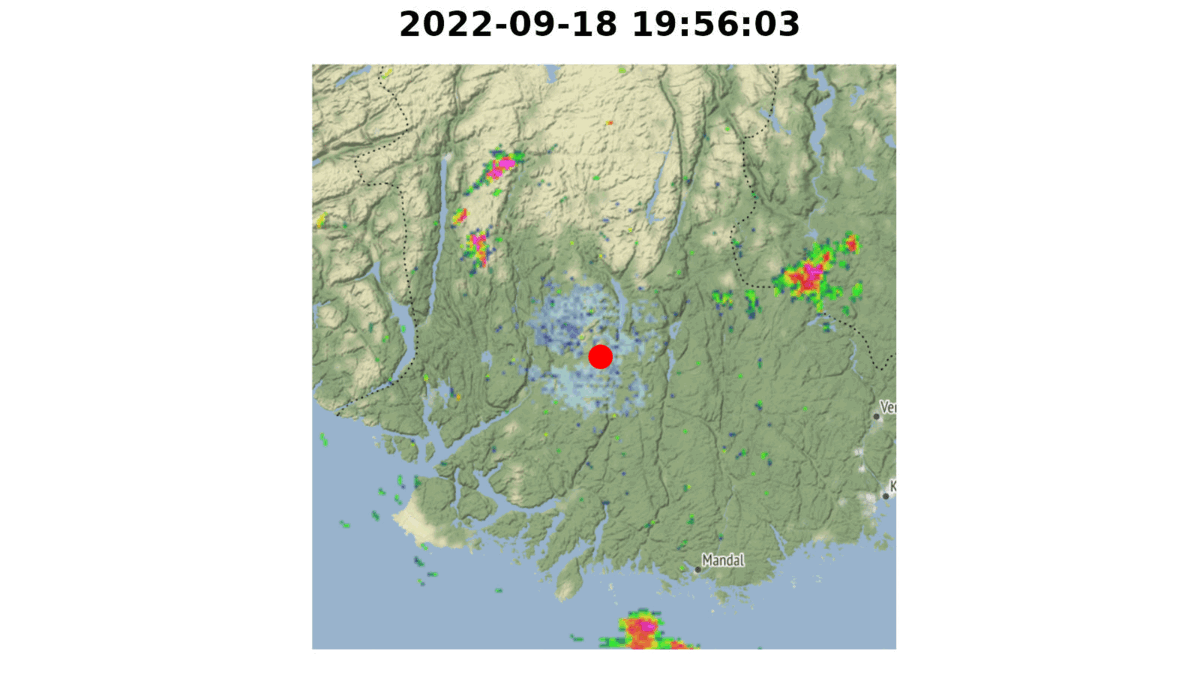THIS CONTENT IS BROUGHT TO YOU BY NINA - Norwegian Institute for Nature Research - read more

Weather radars reveal where birds migrate
Radars that are used to report the weather also provide valuable insight into which migratory routes birds use. For the first time, this tool will be used to map bird migration in Norway.
For many years, information on bird migration has been an unwanted byproduct for meteorologists.
The Norwegian Meteorological Institute operates 12 weather radars in Norway. They are designed to record precipitation. The radars also capture everything else moving in the air, including birds within a radius of several tens of kilometres.
Norwegian bird researchers will now use this technology for the first time.
Can map large scale migration
“Weather radars provide continuous data on the quantity of birds in the air within a massive area and is therefore well suited to study large scale bird migration. This makes weather radars into one of the most important tools for studying bird migration,” says researcher Øyvind Nyheim at the Norwegian Institute for Nature Research (NINA).
Studies from other countries show that many birds fly higher than what we can see with the naked eye. Moreover, around 80 per cent of the migration takes place at night.
“Weather radars are an excellent tool for capturing this migration,” Nyheim adds.

Migrating birds under pressure
A lot of Norwegian birds migrate and are only here for part of the year. Millions of birds migrate along the Norwegian coast and out into the world to take advantage of seasonal fluctuations in the availability of food.
Today, however, many birds are under strong and increasing pressure during their migration. This is due to many factors, among them loss of important rest stops along the migration route, poaching, climate change, and collisions with windows and wind turbines.
To find solutions to the challenges the birds are facing, researchers have used various methods to study the patterns in the migration. Among the most common are banding, direct observations, and GPS tracking
But new methods are constantly being developed. This is where weather radars come in. They are already used to study bird migration in the USA and parts of Europe.
Finding more suitable areas for turbines
“The goal of the research is to use weather radars to map important migratory routes and stopover sites in Norway. We will also map when and how many birds migrate in different parts of the country," Nyheim says.
He explains that many migratory birds die from collisions with wind turbines. Increased knowledge on birds migration routes can make it easier to place wind turbines in areas where bird migration is less vulnerable.
“We are also planning to develop a website with visualisations of the bird migration we are seeing on the weather radars. Here, anyone will be able to enter and explore the bird migration at the different radars almost in real time, and going back several years,” the researcher says.
His work is part of a larger research project. It will use data from weather radars, specialised bird radars, bird observations from the species data bank, and dedicated bird observatories to map coastal and offshore migration.
This will provide much-needed knowledge about birds' migration routes. It is important for decisions around the establishment of wind power plants.
The history of migration research
Knowledge on bird migration is relatively new. Only 200 years ago, the common explanation for why birds disappeared during winter was that they were hibernating in the same way as bears.
The earliest recorded indication that birds actually migrate came in 1822. A stork that had been impaled by a spear was observer flying around in Germany. When the bird was later shot, people noticed the spear design came from West Africa.
Migration research has come a long way since then, and increasingly sophisticated study methods are being developed.

This content is paid for and presented by NINA - Norwegian Institute for Nature Research
This content is created by NINA's communication staff, who use this platform to communicate science and share results from research with the public. NINA is one of more than 80 owners of ScienceNorway.no. Read more here.
More content from NINA:
-
How will climate change affect lakes worldwide?
-
White-tailed sea eagles are breeding in Ireland again after more than a century
-
Could a tunnel help wild reindeer in Norway?
-
Norwegian white-tailed sea eagles are helping to rebuild a lost population in Ireland
-
1 in 4 freshwater species are at risk of extinction: "It's not too late to take action"
-
Insects prefer cold winters with lots of snow




































